Article Archive
L’Artisan Parfumeur
Premier Figuier
20 October, 2017
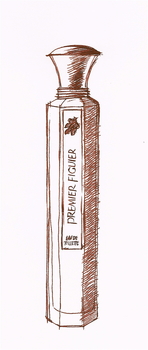 L’Artisan Parfumeur began life in as a small independent brand back in 1979, when Jean Laporte opened his first boutique on Paris’s Rue de Grenelle. Laporte (who had already founded Sisley Paris in 1972) trained as a chemist but had a keen nose, and his first commercial fragrance, Mure et Musc, really captured the spirit of its time. A sweet, slightly hippyish scent, combining blackberries and musk, it established his name and became a big seller in the newly emerging niche-perfume market.
L’Artisan Parfumeur began life in as a small independent brand back in 1979, when Jean Laporte opened his first boutique on Paris’s Rue de Grenelle. Laporte (who had already founded Sisley Paris in 1972) trained as a chemist but had a keen nose, and his first commercial fragrance, Mure et Musc, really captured the spirit of its time. A sweet, slightly hippyish scent, combining blackberries and musk, it established his name and became a big seller in the newly emerging niche-perfume market.
Jean Laporte sold up in 1982 and went on to found the smaller but highly regarded Maitre Parfumeur et Gantier, but L’Artisan Parfumeur continued to expand, fuelled by a run of ground-breaking fragrances. After a long, slow drift into the perfume wilderness, the brand was bought by the Spanish giant Puig, which has given it a much-needed makeover, though it can hardly be regarded as a small independent any more.
Premier Figuier, created by Olivia Giacobetti and released in 1994, very much lives up to its name, in that it was the first perfume to really smell of figs (the fruit but more especially the leaves). I love their scent, which is intensely green and slightly earthy and somehow very sexy, which surely has something to do with their association with baking Mediterranean heat.
Premier Figuier captures that scent perfectly, managing to smell both fresh and slightly sultry at the same time; it also lasts for most of the day. For many years it has been among my favourite fragrances, but not long ago someone pointed out that, like some other perfumes, it has the odd property of also smelling weirdly similar to something else – in this case coconut, which is a scent I’ve never much liked.
As a result, now I get the olfactory equivalent of double vision every time I wear it, which (much to my regret) has slightly lessened its appeal. But don’t let that put you off: if you can ignore my spoiler alert it’s well worth trying.
Heeley
Phoenicia
24 August, 2015
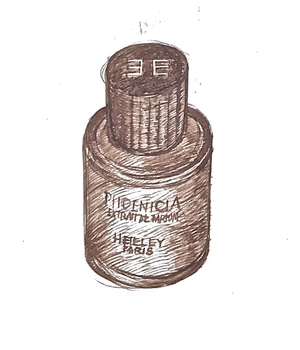 Though there’s some dispute about its exact origins, the word ‘perfume’ most likely derives from ‘fumes from a substance being burned’, so you could say that Phoenicia, the latest fragrance from Yorkshire-born, Brussels-based perfumer James Heeley goes back to perfume’s roots.
Though there’s some dispute about its exact origins, the word ‘perfume’ most likely derives from ‘fumes from a substance being burned’, so you could say that Phoenicia, the latest fragrance from Yorkshire-born, Brussels-based perfumer James Heeley goes back to perfume’s roots.
The name refers to the ancient civilisation that flourished in the eastern Mediterranean around 1000BC, but Phoenicia’s smell is instantly evocative of childhood bonfires, just as his earlier L’Amandière evokes an almond orchard in spring.
‘I loved the way my hair smelled after a bonfire,’ Heeley recalls, and he’s captured the memory using a mixture of cedarwood, oud, smoky birchwood and vetiver.
Luckily there’s more to Phoenicia than smoke. ‘I’ve always loved the concrete of labdanum ciste,’ Heeley says (the densest refined extract from the fragrant Mediterranean shrub Cistus ladanifer), ‘which has a slight smell of dates or prunes.’ Adding this to the formula gives Phoenicia an attractive hint of dried-fruit sweetness, which balances the smokiness is a very attractive way. It certainly lights my fire.
The Library of Fragrance
Pipe Tobacco etc
7 August, 2015
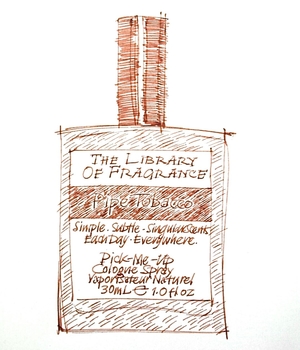 This is the first time I’ve reviewed a brand rather than a single perfume, and it may be the last, but there’s a reason for that. The Library of Fragrance describes its products as ‘Simple. Subtle. Singular Scents. Each Day. Everywhere’, and I wouldn’t quibble with any of that, other than the word ‘subtle’, which not all of the fragrances can really claim to be.
This is the first time I’ve reviewed a brand rather than a single perfume, and it may be the last, but there’s a reason for that. The Library of Fragrance describes its products as ‘Simple. Subtle. Singular Scents. Each Day. Everywhere’, and I wouldn’t quibble with any of that, other than the word ‘subtle’, which not all of the fragrances can really claim to be.
There are over 300 scents to choose from in the full range, and most of them are based on a single idea, from Apple Pie to Wet Garden. They’re cheap, cheerful and, above all, intended to be fun: something to spritz with or spray into the air for a quick hit, whether it’s as conceptual as Moonbeam, as simple as Mango or as playful as Play-Doh or Paperback.
I like them a lot, since they’re a reminder that perfume can be silly and fun as well as sexy and sophisticated (and occasionally pretentious and pestilential). They’re a great introduction to the world of fragrance, especially for anyone who can’t afford to spend £80 a time, and some of the conceptual scents are genuinely interesting – Dirt is deservedly popular, as is Snow and Thunderstorm.
Given their price compared with the stratospheric cost of top-quality raw materials, I wouldn’t necessarily recommend their takes on so-called ‘naturals’ like Neroli or Iris, but The Fragrance Library makes no great claims for its ingredients, unlike some brands that really should know better. The bottles are small (30ml or 1 fluid ounce) and the perfume concentration is low, between 2% and 8%, which in industry jargon counts as a ‘cologne spray’, but then in the UK they currently sell at just £15 a time. Part of the range can now be found in larger branches of Boots, which I think is great, and the rest is available online.
Some of the scents I’ve mentioned may sound familiar, and that’s because they used to be available in the UK under the Demeter brand, which was founded in Pennsylvania in 1994 by the maverick perfumer Christopher Brosius, who’d previously worked for Kiehl’s. Demeter’s early fragrances included Tomato, Dirt and Grass, and the brand quickly gained a cult following, in Britain as well as the USA, but management disagreements led to Brosius leaving in 2004 to set up on his own as CB I Hate Perfume. Demeter is still going strong in the USA, but because of trademark restrictions it can’t use the Demeter brand name in Europe– thus The Library of Fragrance. Start exploring it here.
Chanel
Pour Monsieur
7 July, 2015
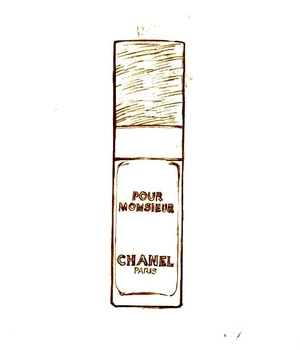 I’ve loved Pour Monsieur for decades now, so it was a bit of a surprise when I realised that I hadn’t reviewed it up till now. But actually I think that tells you something about the fragrance itself, which is so discreet that it’s all too easy to overlook – and that’s a real shame, because it’s a wonderful thing.
I’ve loved Pour Monsieur for decades now, so it was a bit of a surprise when I realised that I hadn’t reviewed it up till now. But actually I think that tells you something about the fragrance itself, which is so discreet that it’s all too easy to overlook – and that’s a real shame, because it’s a wonderful thing.
Pour Monsieur smells softly spicy when you first spray it on, but soon you also start smelling its mossy, herbaceous base. The spiciness comes partly from cardamom, and the woodiness is a mixture of oakmoss (actually a type of fragrant lichen) with tiny amounts of cedarwood, resinous labdanum (a kind of cistus) and earthy vetiver.
Chanel’s first modern men’s fragrance, it was conjured up by the perfumer Henri Robert and launched in 1955. Robert, who was born in 1899 and died in 1987, took over at Chanel after the retirement of the legendary Ernest Beaux, and went on to launch Chanel No19 in 1970 and Cristalle in 1974.
Pour Monsieur is one of the best examples of the perfume style or ‘family’ known as chypre, which derives from the French for Cyprus (the island rather than the tree), presumably inspired by the scent of Mediterranean herbs and shrubs baking in the sun. The basic combination – first popularised by François Coty in a 1917 perfume of the same name – combines bergamot, oakmoss and labdanum.
There have been endless variations on the theme since, but few of them match Pour Monsieur for sheer class; even its packaging is beautifully cool. Though it’s not an expensive perfume, it is redolent of luxury in its quiet complexity, like the deceptively simple face of a Patek Philippe watch. This is insider luxury, if you like, which is all about discretion and restraint rather than ostentation and excess.
The upside – in a perfume or a Patek Philippe – is that not everyone will recognise what you’re wearing. And while Pour Monsieur lasts a long time on the skin, it’s one of those fragrances that doesn’t carry far, so if you’re looking to impress it probably isn’t for you. But if wearing something wonderful makes you feel more self-confident and assured, then I can think of few better perfumes to buy.
Caron
Pour un Homme
12 June, 2015
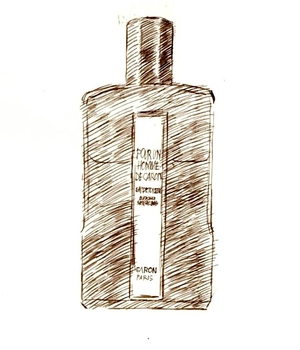 I’ve known about Caron’s Pour un Homme for many years – it’s often been hailed as one of the classics of men’s perfumery, and a couple of friends used to enthuse about it – but on the odd occasions when I’d tried it I couldn’t really see what there was to get so excited about. Despite its heritage it came in a cheap-looking bottle, and the testers I smelled did nothing much for me; to be honest I thought it was a bit dull.
I’ve known about Caron’s Pour un Homme for many years – it’s often been hailed as one of the classics of men’s perfumery, and a couple of friends used to enthuse about it – but on the odd occasions when I’d tried it I couldn’t really see what there was to get so excited about. Despite its heritage it came in a cheap-looking bottle, and the testers I smelled did nothing much for me; to be honest I thought it was a bit dull.
But then I got a new bottle, and either Richard Fraysse, Caron’s in-house perfumer, has smartened up the fragrance formula, or the scales have fallen from my eyes. The new bottle is certainly tidier than the old ones were: even my enthusiastic friends admitted that it looked like members of the Caron family had stuck the labels on, rather wonkily, by hand.
Actually the Carons haven’t been involved with Parfums Caron since the early 1900s, when Anne-Marie Caron sold her family perfume shop in the Rue de la Paix in Paris to the brothers Ernest and Raoul Daltroff. The brothers came from a cosmopolitan Russian Jewish family – their father ran a railway company in Saône et Loire – but for some reason they decided to get into perfume.
There doesn’t seem to be any record of Ernest training in perfumery, but he evidently had a natural talent, and he was helped, from 1906, by a one-time dressmaker called Félicie Wanpouille, who became what we’d now call the company’s creative director. Between them they developed a series of perfumes, with striking packaging and beautiful Baccarat bottles, and in 1911 they had their first big success with Narcisse Noir (still available but completely reformulated and apparently nothing like the original).
In 1919 came Tabac Blond, which for many contemporaries captured the spirit of the so-called Jazz Age, and more particularly to the outrageous young women who had taken to smoking cigarettes in public (again it’s still on the shelves, but the modern version smells nothing like the original, which was more like the wonderful and still untampered-with Knize Ten). Daltroff made Félicie Wanpouille co-owner of Caron in 1922.
Pour un Homme arrived in 1934, and has since established itself as one of the all-time fragrance classics. On the face of it it’s a simple enough smell: lavender, lavender and more lavender. But perfumes (at least good ones) are rarely as simple as they might seem, and Pour un Homme is no exception.
Like Guerlain’s ground-breaking Jicky from 1889, it mixes lavender with vanilla, but with very different results: sniffing them side by side is a good reminder of why a list of ingredients tells you very little about what a perfume will actually smell like. Jicky has a strange, sexy but disconcerting smell, which has sometimes been compared with cat wee, and it’s the (mostly synthetic) vanilla that you notice first.
Pour un Homme, by contrast, smells very like real lavender when you brush its leaves, and (to me at least) it’s got an almost minty cool freshness. It’s a while before you smell the vanilla – and actually if I didn’t know it was in there I’m not sure I’d have even noticed. Though the lavender smell stays for a long time, this extra touch of vanilla (plus some nice but unobtrusive musks) adds a gently comforting character, without being sweet or cloying in any way.
All in all I think Pour un Homme is a lovely fragrance, if not one that’s likely to get you noticed at a party; this is something I’d wear for myself rather than for other people.
As for its brilliant creator, Ernest Daltroff, he came to a rather sad end. Though he escaped the Nazi invasion of France in 1939, moving first to Canada and then New York, he was by this time in his seventies, frail and depressed, and he died just three years later.
Félicie Wanpouille continued running Caron until she retired in 1962, when she sold the company to Parfums Revillon. In 1967 the brand was bought by the American pharmaceuticals company AH Robins, which opened a flagship store on the Avenue Montaigne. In 1988 Caron was sold again, this time to a French hair-products and cosmetics group, whose owner, Patrick Alès, had long admired the brand. Today it’s run by Patrick’s son Romain. Long may it prosper.